How To Convert A Normal Inverter To A Solar One with A Solar Conversion Kit?
Most of us have been using a standard inverter and battery for a long time, but with rising electricity prices and frequent power outages, you may want to consider switching to solar energy.
Furthermore, it can save money on electricity bills, provide reliable power, and contribute to environmental cleanup.
The cost of solar panels has dropped significantly in recent years, making it more affordable for average people to opt for a solar power system on a limited budget.
We’d like to draw your attention to the procedure to convert a normal inverter to a solar inverter in this post.
Before we understand how to convert a normal inverter to a solar inverter, we must first master some basic concepts, which are stated below. This includes, for example,
- What is the distinction between a standard inverter and a solar inverter?
- What is the purpose of solar inverters?
Solar Inverter vs Normal Inverter
A standard inverter, often known as a standalone inverter, is a basic type of inverter. It converts direct current (DC) to alternating current (AC). A typical inverter power system comprises a direct current (DC) supply source (Battery) and a stand-alone inverter.
In this case, the battery is charged from the grid, and the energy stored in the battery is only used when the main power goes off.
On the other hand, the pure solar inverter replaces the battery’s power supply with DC power from the solar panels.
Connecting the solar panels directly to the inverter input is not recommended. A solar charge controller, which is a built-in component of a solar inverter, is required in this case.
The functions and kinds of solar charge controllers are covered in the next section.
The pure solar inverter is commonly utilized in on-grid solar systems. However, the inverter referred to as a solar inverter in our market is a Hybrid inverter. A hybrid inverter combines a stand-alone inverter (or regular inverter) and a solar inverter.
In conclusion, there are two DC sources for a Hybrid inverter. The first is a battery, while the second is a solar panel. Another feature of a hybrid solar inverter is the existence of a charge controller.
When purchasing a new inverter, always go with a solar inverter. Even if your budget is limited, you can purchase the solar panels in the next step and use the solar inverter as a standard inverter until you get the solar panels.
Some of the best solar inverters in our recommendations include Luminous Zolt 1100 Sine Wave Inverter, Luminous Solar hybrid 1100/12V Home UPS, UTL Gamma Plus rMPPT Solar Hybrid Inverter 1000VA, and Luminous Zelio+ 1100 Home Pure Sinewave Inverter UPS.
You can view the details, including the most recent price, and purchase from Amazon.
It is beneficial to compare the prices of inverters, solar panels, and charge controllers (solar conversion kits) on the Loom Solar website.
Why Do We Require a Solar Inverter?
As previously stated, a typical inverter cannot convert solar energy into electrical energy. To use solar energy, we need a solar inverter or a hybrid inverter.
When we think about solar energy, we should undoubtedly examine the basic benefits of solar energy.
- This is an infinite source of energy that is both free and widely available.
- There will be no pollution, noise, or emissions of harmful substances of any kind.
- This may be utilized anywhere, including remote regions not linked to the main grid supply.
The solar panels, with the assistance of a charge controller, convert solar energy into electricity. Because charge controllers are an essential component of solar inverters, let us learn more about them.
This charge controller is also known as a solar conversion kit because it can convert a standard existing inverter to a solar inverter.
Components Required to Convert a Normal Inverter to Solar One
In a typical inverter setup, we have a battery source and a standard inverter. We’ll also need solar panels and a charge controller to convert this to a solar system.
Solar Charge Controller
The solar charge controller, as the name implies, manages or regulates the DC electricity from the solar panels.
The charge controller is used to connect the solar panel to the inverter system. As we all know, the magnitude of the DC voltage is purely determined by the intensity of the sunlight and may be continually altered.
As a result, the Solar charge controller controls the fluctuating DC input to a constant DC output. So the battery and loads receive a steady DC voltage.
Furthermore, the solar charge controller safeguards the batteries from overcharging, extending battery life in the long term. It also stops electricity from flowing backwards from the battery to the solar panels.
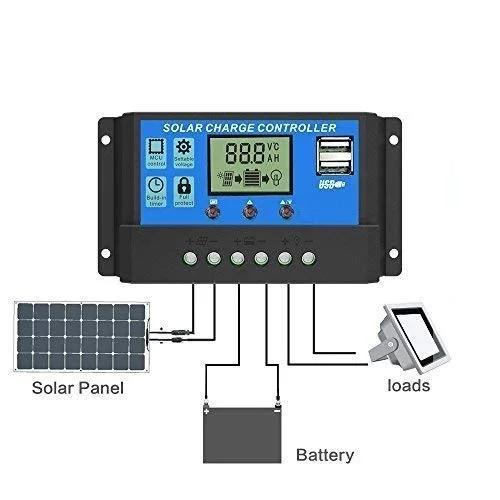
Modern charge controllers can manage charging as well as comprehensive management of inverters. Controllers in hybrid inverters are intelligent enough to handle charging, DC input usage, grid supply/inverter selection, etc.
They are categorized into two types based on the working techniques employed in solar charge controllers.
- PWM solar charge controller.
- MPPT charge controller.
1. PWM Solar Charge Controller
PWM (Pulse Width Modulation) charge controllers are simple and less costly. It’s utilized in tiny solar power systems where higher efficiency isn’t necessary.
PWM charge controllers act as a bridge between the solar panels and the batteries. This charges the battery to a voltage slightly higher than the load voltage. It should be noted that this value is much below the solar panel’s “maximum power voltage.”
As a result, the PWM charge controller cannot utilize the maximum energy from the solar panels.
PWM charge controllers charge in three steps, namely
- Bulk charge,
- Constant voltage charging and
- Trickle or float charging.
Bulk Charging
The charging cycle begins with bulk charging. The battery voltage is very low at this time in the charging process, and the PWM power controller allows the battery to charge at a greater voltage and current.
This procedure is repeated until the battery voltage is slightly higher than the charging voltage.
Constant Voltage Charging
The battery is now ready for the next step of charging after the bulk charge. The battery voltage will automatically decline to normal battery voltage over a short period, and a balanced voltage charge will occur. This charging stage is also known as absorb charging.
Trickle or Float Charging
The battery voltage drops to a low level after the absorb charging stage owing to self-discharge in the battery. To keep the battery potential at a normal level, this stage battery will be charged again at a very low current. Charging at this level is referred to as trickle or float charging.
2. MPPT Solar Charge Controller
Charge controllers using MPPT (Maximum Power Point Tracking) are becoming more sophisticated. They are more expensive than PWM charge controllers. These are found in big solar power systems where energy efficiency is important.
The maximum power transfer theorem serves as the basis for MPPT solar charge controllers. The MPPT charge controller may vary its input voltage to get the most power out of the solar panels.
The MPPT charge controller continually monitors and records the voltage and current of the solar panel in real-time, and adjusts its output voltage so that the whole power is transmitted to the battery or the associated load.
The MPPT charge controller also includes many charging phases, such as absorbing charging, constant voltage charging, and trickle charging. However, unlike a PWM charger, it may switch to different stages of MPPT charging as needed by the system.
This is the primary benefit of the MPPT Solar Charge Controller.
Difference Between PWM and MPPT Solar Charge Controllers
| Factors of comparison | PWM charge controller | MPPT charge controller |
| Solar panel Voltage | The voltage of the battery and the solar panel should be the same. | The voltage of the solar panels may be greater than the voltage of the battery. |
| Application | In modest solar power installations of less than 2kW | In bigger power systems with more than 2kW of output |
| Working | The solar panel feeds current at a voltage somewhat higher than the battery voltage. | The current is extracted from the solar panel at the solar panel’s maximum power voltage.’ |
| Power transfer | The efficiency of power conversion is around 97 per cent. | The efficiency of power conversion is around 97 percent. |
| Charging stages | 3 stages of charging | Multi stages of charging |
| Charging current | With a maximum charging current rating of 60A. | A charging current of up to 120A is available. |
How Do You Convert a Normal Inverter to a Solar Inverter?
We’ve already covered the fundamentals of charging and charging controllers in a solar power system. Then we can move on to our primary part, which is converting a normal inverter into a solar inverter.
As previously stated, solar panels and a charge controller are required for the normal inverter to solar inverter conversion.
In most cases, a 12-volt 150-165 Ah lead-acid battery and an 800-1250 VA inverter system are installed. In such a system, a maximum of 400-500 watts of solar panels can be installed.
This necessitates the installation of a charge controller in addition to the panels. More capacity panels can be used on a 24-volt inverter with two batteries.
Warning:
When working with the inverter system, there is a risk of electrical shock. Carry out these tasks with the assistance of a licensed electrician.
Battery for New Solar Power System
It is critical to understand what type of battery your present inverter utilizes when using solar panels in combination with a normal inverter system.
Even though the battery is a lead-acid battery with a capacity of 150 Ah and a voltage of 12 volts, all batteries with the same rating may not have the same characteristics.
Furthermore, the batteries are classified using a C rating. Batteries come in a variety of C ratings, including 5C, 10C, and 20C. In conventional domestic inverter systems, 20C-type batteries are typically utilized.
If the battery has a capacity of 10 C, it may be charged and discharged at a rate of 150/10 = 15 Ampere.
What is the advantage of this?
By generating a higher current, the battery may be fully charged in less time. That instance, if it takes 20 hours to completely charge the C20 battery, it will take 15 hours to charge the C10 battery.
Similarly, if greater power is needed for a shorter amount of time, the C10 battery can be used. For solar applications or in areas with regular power outages, at least C10 batteries with large capacity should be utilized.
Related: How to Select the Right Inverter and Battery for Home in India?
How to Select Solar Panels?
Solar panels with power levels ranging from 10 W to 440 W and maximum voltages ranging from 12 V to 24 V are available.
To determine the power and voltage levels of the solar panels, you should be aware of the existing battery and inverter ratings. This assures that the solar panel will work with the existing system.
Solar Panel Type
Solar panels of various types are available on the market. Polycrystalline, Monocrystalline, and Mono PERC are the three common types.
Monocrystalline panels are more energy-efficient than polycrystalline panels. Mono PERC is the most recent generation of monocrystalline panels.
We recommend that you use monocrystalline or mono PERC panels. This article includes a list of some of the best solar panels.
Solar Panel Voltage
As previously stated, solar panels are available in 12 V and 24 V configurations. Select a solar panel that has the same voltage rating as the battery.
If your current system includes a single 12 V battery, you may use a 12 V solar panel or a 24 V solar panel if the battery is 24 V (2Nos 12 V battery).
This voltage restriction applies only when using PWM charge controllers. MPPT charge controllers do not require any voltage selection.
Solar Panels’ Power Rating
The power of the solar panel is dependent on the capacity of the existing battery. As a result, the exact current rating of the solar panels should be known for each power rating. The usual current rating is summarised here.
- 10W Panel – 1 Amp
- 20W Panel – 2.5 Amp
- 180W Panel – 9.5 Amp
- 350W Panel – 9.6 Amp
- 440W Panel – 10.5 Amp
Assume you have a battery with a capacity of 12 V,150 Ah that has to be charged for 10 hours at a current of 15 A.
The current may be achieved by connecting two 350W solar panels in parallel. This permits us to employ at least two 12V,350W panels.
We’d like to suggest some of the best solar panels you can choose from in this situation. These are Luminous Solar Panel (165 watts), LOOM SOLAR Panel 190 Watt-12 Volt Mono PERC, LOOM SOLAR Panel Shark 440 watts, and Loom Solar Shark Bi-Facial Solar Panel, 440-530 Watt.
All of the information about these panels is available on Amazon, where you can purchase them.
Related: How Do You Choose the Best Solar Panels in India?
Charge Controller Selection
The next step is to choose a charging controller. We’ve already discussed the benefits and drawbacks of PWM and MPPT charge controllers.
As a result, you can choose whatever you wish. We have included some suggestions in this article that will make it extremely easy for you to choose.
In the case of the charge controller, we must constantly take into account the voltage and current rating. The voltage should be the same as the voltage of the battery. This should be able to carry the same ampere capacity as the battery charging current.
Now we’ll look at how solar panels and charge controllers will be linked to the existing inverter system.
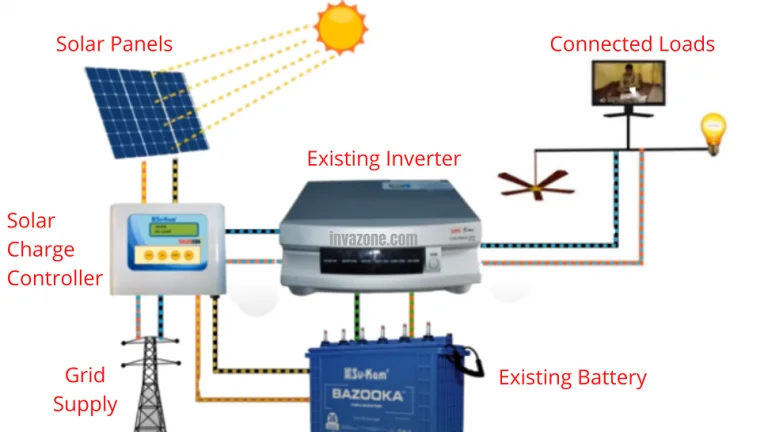
The diagram above shows how to connect the solar controller and solar panel(s) to your present battery and inverter setup.
In the existing system, the inverter is hooked directly to the grid power source. In the event of a power outage, the energy stored in the battery is used to power the connected load.
When we convert a regular inverter to a solar inverter, however, the inverter is controlled by the solar charge controller. The charging controller connects it to the grid supply. You can see that the charge controller is connected to both the battery and the solar panels.
Many charge controllers include DC output for direct current loads. It mostly operates at 12 VDC. This is where we’ll plug in the 12 DC lamps and fans.
This implies we may use solar energy directly through these solar controllers, eliminating the requirement for an inverter and a battery.
Charge controllers of the next generation that are intelligent enough to decide,
- from which source the battery has to be charged (whether it is from the solar panel or the mains)
- when the solar energy is directly fed to the inverter
- when the grid supply is to be connected to the inverter,
- when the battery power shall be utilized.
We always recommend using an MPPT solar charge controller, as previously stated. Smarten Prime+ MPPT Solar PCU/Charge Controller 12/24V: 30A and Smarten Prime+ 12/24V 50A MPPT Solar Charge Controller are two of the best solar conversion kits.
You can find more information on Amazon, and if you’re on a tight budget, you could choose low-cost PWM controllers.
Frequently Asked Questions
A normal inverter cannot be used as a solar inverter. To convert a normal inverter to a solar inverter, you must use a solar charge controller (also known as a solar conversion kit) and appropriate solar panels.
The ability to add solar panels to an existing solar inverter system is dependent on the capacity of the inverter. As a result, be aware of the inverter or charge controller’s permissible solar panel wattage.
Yes, a solar battery can be connected to a regular inverter. However, the battery capacity should be as specified by the inverter manufacturer.
No. Any inverter cannot be used as a solar inverter. To use it as a solar inverter, you must use a dedicated solar inverter or convert an existing inverter to solar.
Yes. A standard inverter can be converted to a solar inverter by adding additional components to the existing system, such as a charge controller and solar panels.
We hope you find this information useful, and please share it with your friends and relatives.
Subscribe to our free newsletter so that you will get similar articles and regular updates directly in your Email.
Also, consider following our Facebook and Twitter pages for regular updates.
Disclosure: If you follow our links to a retailer’s website and make a purchase, we will get an affiliate commission on some, but not all, of the items or services we promote. This will cause no price change for you.

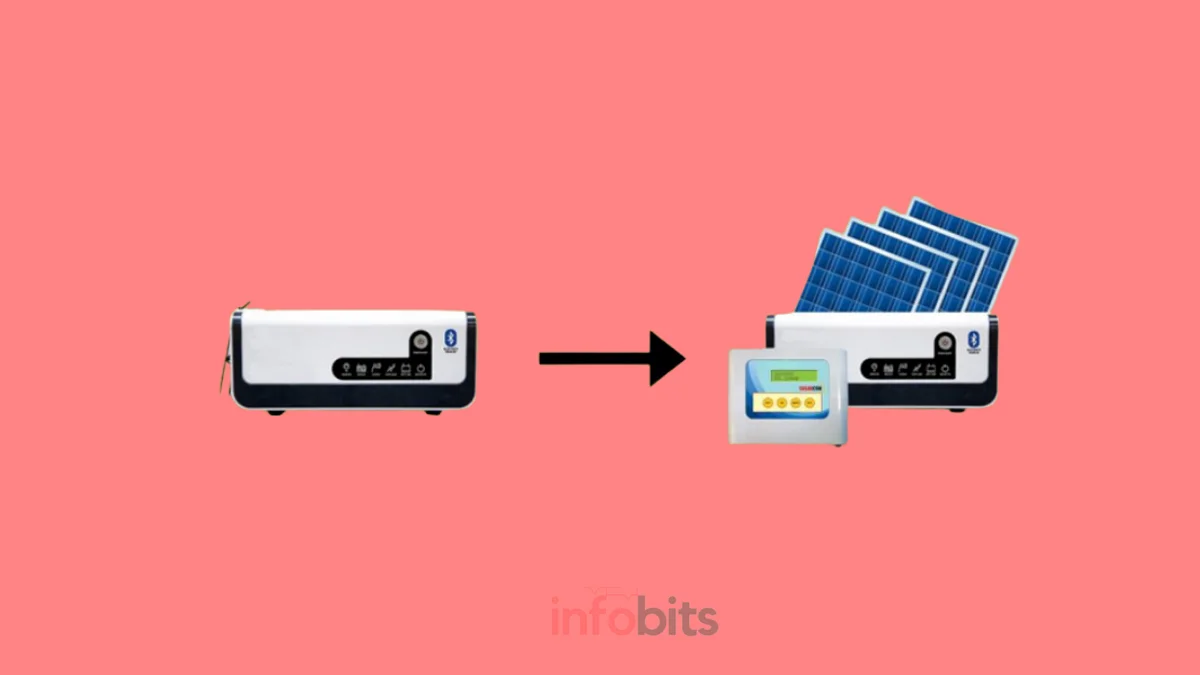
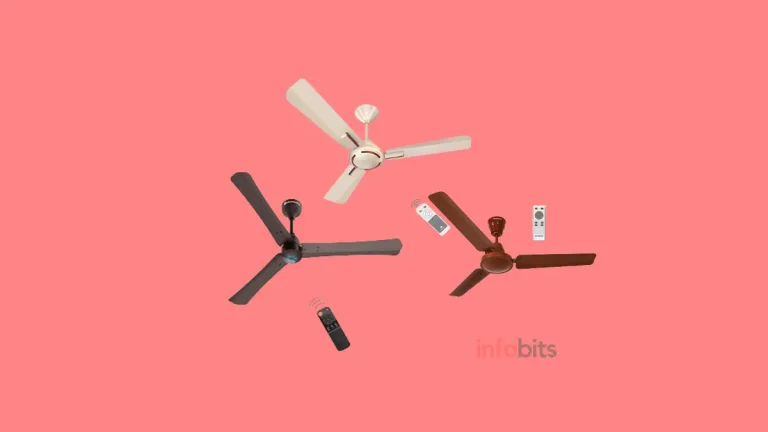
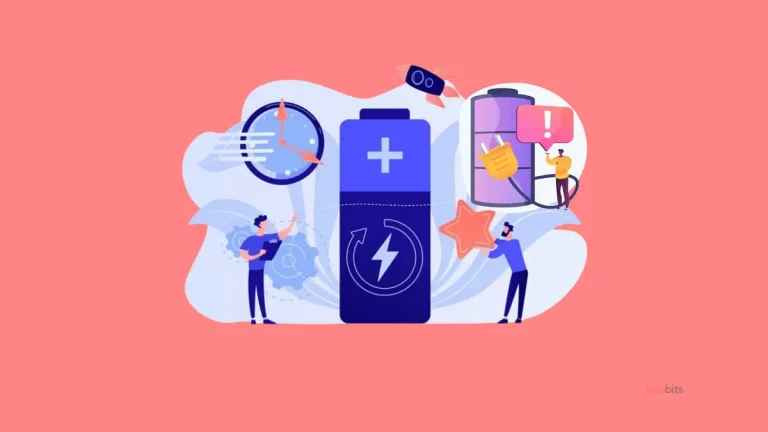
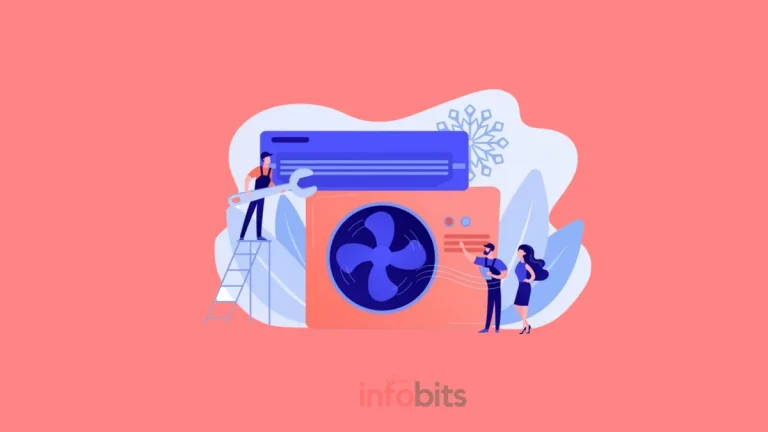
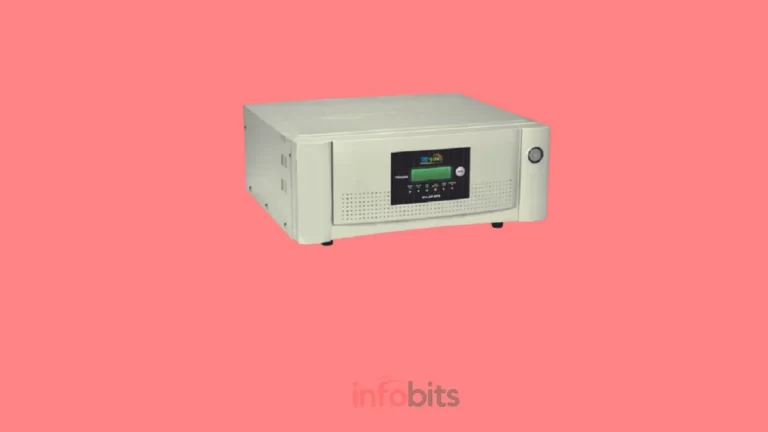
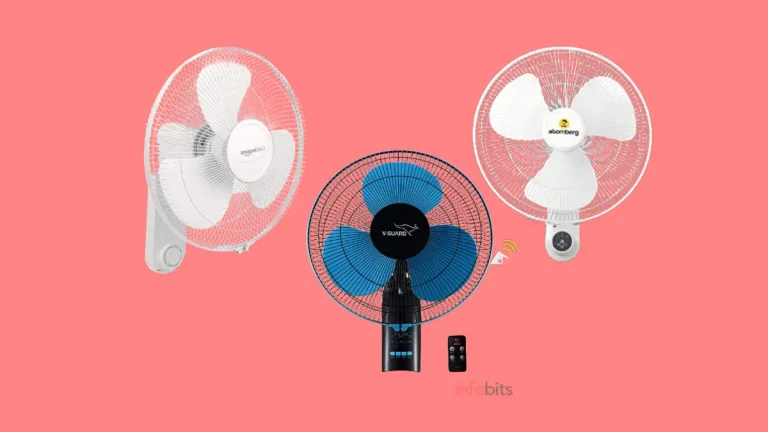
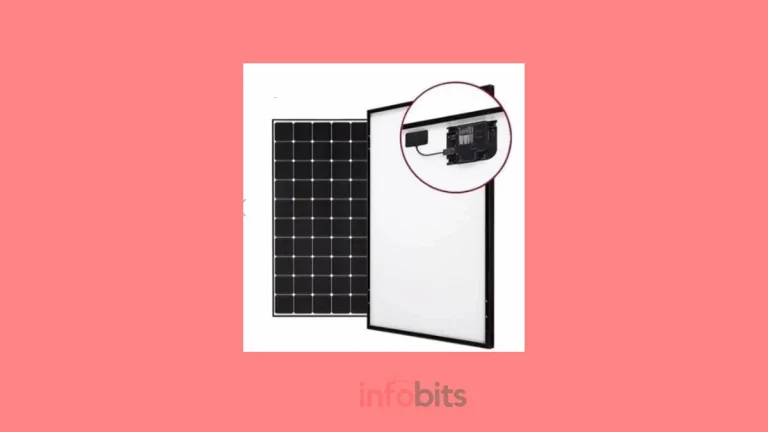
I need to convert livguard 900 VA pure sine wave inverter & livguard 180 AH tubular battery into solar retrofit system. Pl guide me the best charge controller, solar panels with all details & cost. Thanking you
You can use two 180 W,12 V solar panels and a 40 A MPPT charge controller. Loom Solar’s 180-watt monocrystalline panel and UTL MPPT SMU 12V/24V 40-amp automatic solar charge controller are our recommended products.